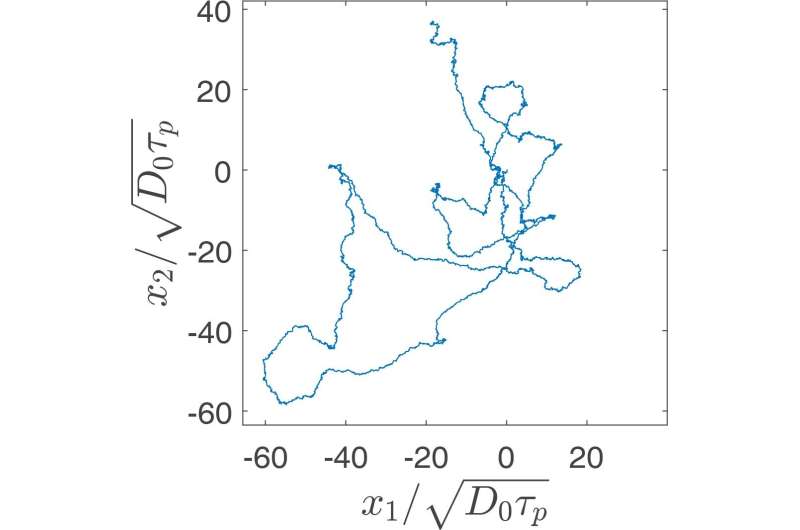Building better diffusion models for active systems

In normal circumstances, particles will follow well-established random motions as they diffuse through liquids and gases. Yet in some types of system, this behavior can be disrupted—meaning the diffusion motions of particles are no longer influenced by the outcomes of chains of previous events. Through research published in EPJ E, Bernhard Mitterwallner, a Ph.D. student in the team of Roland Netz at the Free University of Berlin, Germany, has developed new theories detailing how these unusual dynamics can be reproduced in generalized mathematical models.
The team's approach could enable researchers to learn more about behaviors including the transport of biological cells, and the motions of 'active' materials—whose particles harvest energy in their surrounding environments to propel themselves forwards. Typically, these diffusion characteristics only appear briefly as systems transition between stable states—but under the right conditions, they can persist over far longer timescales. Researchers can study this effect by introducing a 'memory term' into their calculations, which can account for the influences of past events on different timescales. Several studies have now used this principle to explore how this 'transient persistent motion' can be captured in models of viscoelastic media—which can resist deformation when stress is applied.
The authors took a more general approach in their study; basing their calculations around an equation of motion which offered a useful framework for describing unconventional diffusion behaviors. When adding a memory term into the equation, their models give rise to transient persistent motion in a range of different systems, which had not been explored in previous studies. The team's results could now enable researchers to accurately model diffusion behaviors in a broader range of situations—and could be particularly useful for studies of advanced materials which respond to their surrounding environments.
More information: Bernhard G. Mitterwallner et al. Negative friction memory induces persistent motion, The European Physical Journal E (2020). DOI: 10.1140/epje/i2020-11992-5
Journal information: European Physical Journal E
Provided by SciencePOD





















